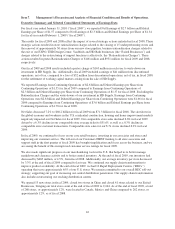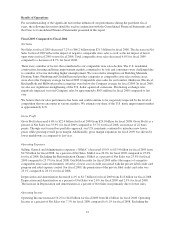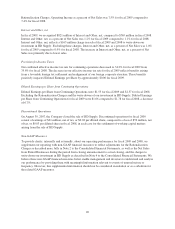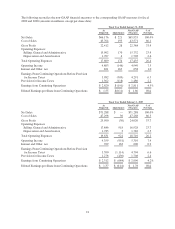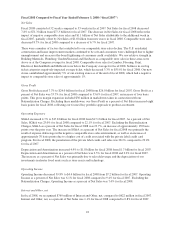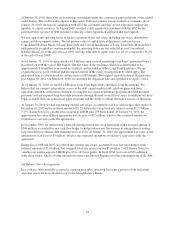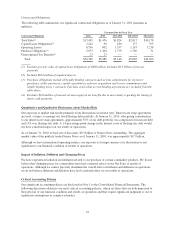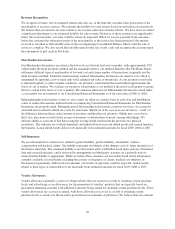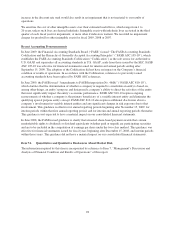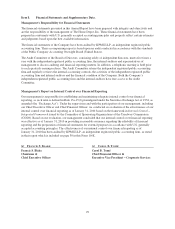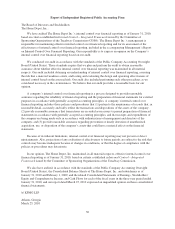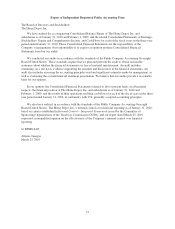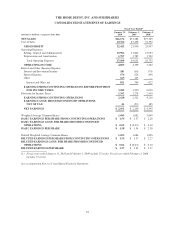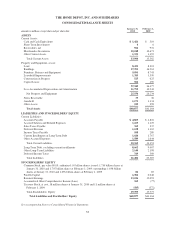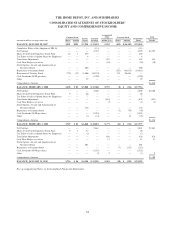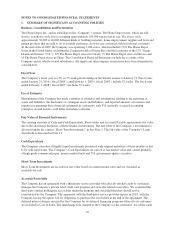Home Depot 2009 Annual Report Download - page 32
Download and view the complete annual report
Please find page 32 of the 2009 Home Depot annual report below. You can navigate through the pages in the report by either clicking on the pages listed below, or by using the keyword search tool below to find specific information within the annual report.Revenue Recognition
We recognize revenue, net of estimated returns and sales tax, at the time the customer takes possession of the
merchandise or receives services. We estimate the liability for sales returns based on our historical return levels.
We believe that our estimate for sales returns is an accurate reflection of future returns. We have never recorded
a significant adjustment to our estimated liability for sales returns. However, if these estimates are significantly
below the actual amounts, our sales could be adversely impacted. When we receive payment from customers
before the customer has taken possession of the merchandise or the service has been performed, the amount
received is recorded as Deferred Revenue in the accompanying Consolidated Balance Sheets until the sale or
service is complete. We also record Deferred Revenue for the sale of gift cards and recognize this revenue upon
the redemption of gift cards in Net Sales.
Merchandise Inventories
Our Merchandise Inventories are stated at the lower of cost (first-in, first-out) or market, with approximately 82%
valued under the retail inventory method and the remainder under a cost method. Retailers like The Home Depot,
with many different types of merchandise at low unit cost and a large number of transactions, frequently use the
retail inventory method. Under the retail inventory method, Merchandise Inventories are stated at cost, which is
determined by applying a cost-to-retail ratio to the ending retail value of inventories. As our inventory retail value
is adjusted regularly to reflect market conditions, our inventory valued under the retail method approximates the
lower of cost or market. We evaluate our inventory valued under a cost method at the end of each quarter to ensure
that it is carried at the lower of cost or market. The valuation allowance for Merchandise Inventories valued under
a cost method was not material to our Consolidated Financial Statements as of the end of fiscal 2009 or 2008.
Independent physical inventory counts or cycle counts are taken on a regular basis in each store and distribution
center to ensure that amounts reflected in the accompanying Consolidated Financial Statements for Merchandise
Inventories are properly stated. During the period between physical inventory counts in our stores, we accrue for
estimated losses related to shrink on a store-by-store basis. Shrink (or in the case of excess inventory, “swell”) is
the difference between the recorded amount of inventory and the physical inventory. Shrink may occur due to
theft, loss, inaccurate records for the receipt of inventory or deterioration of goods, among other things. We
estimate shrink as a percent of Net Sales using the average shrink results from the previous two physical
inventories. The estimates are evaluated quarterly and adjusted based on recent shrink results and current trends in
the business. Actual shrink results did not vary materially from estimated amounts for fiscal 2009, 2008 or 2007.
Self-Insurance
We are self-insured for certain losses related to general liability, product liability, automobile, workers’
compensation and medical claims. Our liability represents an estimate of the ultimate cost of claims incurred as of
the balance sheet date. The estimated liability is not discounted and is established based upon analysis of historical
data and actuarial estimates, and is reviewed by management and third-party actuaries on a quarterly basis to
ensure that the liability is appropriate. While we believe these estimates are reasonable based on the information
currently available, if actual trends, including the severity or frequency of claims, medical cost inflation, or
fluctuations in premiums, differ from our estimates, our results of operations could be impacted. Actual results
related to these types of claims did not vary materially from estimated amounts for fiscal 2009, 2008 or 2007.
Vendor Allowances
Vendor allowances primarily consist of volume rebates that are earned as a result of attaining certain purchase
levels and advertising co-op allowances for the promotion of vendors’ products that are typically based on
guaranteed minimum amounts with additional amounts being earned for attaining certain purchase levels. These
vendor allowances are accrued as earned, with those allowances received as a result of attaining certain
purchase levels accrued over the incentive period based on estimates of purchases. We believe that our estimate
26


